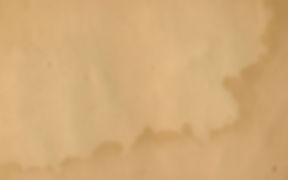
A Healer's
Manifesto
As we take stock of ourselves as a society, we are struck by how little progress we have made in creating a culture that promotes and preserves our own mental and emotional health. In fact, the statistics generated by the mental health profession seem to reflect that we as a society are actually losing ground.
This fact is particularly stunning in light of the expectations that were created at the beginning of the Modern Era with the advent of science and its promise of a "better life through chemistry." The irony is that the industrialized societies of the world--those most advanced scientifically--seem to maintain the highest rates of depression, anxiety, and almost every other form of what we have come to call "mental Illness." Most disturbing, recent revelations by and about the mental health industry indicate that our organized attempts to create solutions to the rising tide of mental dis-ease in our society seem instead to be contributing to the erosion of our wellbeing.
As mental health professionals we can no longer ignore this fact nor can we be satisfied with the status quo. Nothing less than a revolutionary paradigm shift that transforms our profession from the inside out will correct the problem. It is unrealistic to think that this revolution will begin at the institutional level. Rather, it must begin in the individual hearts, minds, and practices of those of us that profess to be therapists . . . “healers.”
Let the following set of affirmations form the first draft of a trans-disciplinary credo that provides new imperatives in the way we practice our craft as people helpers; A manifesto that reflects a worthiness of the mantle that we have accepted in our tribe--that of healer. . .
Five Affirmations of the
Healer's Manifesto
with reflections & commentary
“Above all else, I am a therapist--a
healer of hearts, minds, & relationships.”
originally meant to compassionately offer one’s time, energy, and skill in the same way that a trusted household servant might tend to the care and healing of a cherished family member. This rich image provides a description of the posture of heart and mind that guides the intentional actions of the true healer.
Healing, or the ability to regenerate wellbeing and wholeness, is a property unique to living organisms and cannot be adequately comprehended or explained from a mechanistic point of view. The process of healing remains irreducible, unquantifiable, and as mysterious as the phenomenon of life itself.
The healing process, therefore, cannot be imposed, forced, or manufactured. It must be evoked in the context of a collaborative partnership between healer and subject and involves processes that are beyond the full comprehension of either.
1
The ancient greek word "therapaie" from which the word “therapist” is derived
“I practice a traditional ‘healing art’ that is rooted in and utilizes relationship and community.”
millennia. While modern science has informed the use of language as a healing tool, the practice of
“transformational talk” is a trans-cultural, timeless phenomenon that predates the advent of western science. It is a traditional “folk art” not rooted in empiricism, but in the traditions of the practitioner’s spiritual, tribal, and professional mentors.
The practice of the healer utilizes, respects, preserves, and is anchored in relationship and community and claims no other “medicine.” Positive outcome is determined primarily by special consensus between the practitioner and the subject and normally requires no additional empirical verification.
2
The transformative use of language is a tradition that dates back centuries, even
“In my work, I seek to preserve the integrity of the whole person,the uniqueness of the individual, and the sacredness of the human being.”
emotional, and relational elements. Whatever term is used to describe this convergence (mind, heart, soul, spirit,
etc.), it is “sacred” and nonsummative, meaning that it can only be fully apprehended as each element is respect-
fully placed in the context of all the others.
While the healer may utilize some contrivance or convention (such as a diagnosis) that deconstructs the complexity
of the human condition for the sake of theoretical exposition, the healer resists any general posture of intellect
or attitude that fragments or distorts this holism. Regardless of theoretical orientation, The healer strives at all
times to see human beings “in context.”
3
The resilience and regenerative ability of the human being resides in a unique convergence of psychological,
“I reject the molecular hypothesis as an sufficient summation of the human
condition.”
chemical reactions bounded from the exterior world by semi-permeable membranes”--forms the foundation of the medical model. While it has been useful in developing treatments for certain physiological maladies, the molecular hypothesis becomes irrelevant and inappropriate when applied to the treatment of the minds, hearts, souls,
and spirits of human beings.
4
The molecular hypothesis--that life and all living functions can be reduced to and sufficiently
understood as " a series of
“I believe that the motive of the healer for practicing his or her craft is a vital element in the healing process.”
All ancient healing disciplines teach that “right action” flows only from “right motive.” The healer seeks a path of
personal and professional development that cultivates compassion as the primary motive for practice.
5